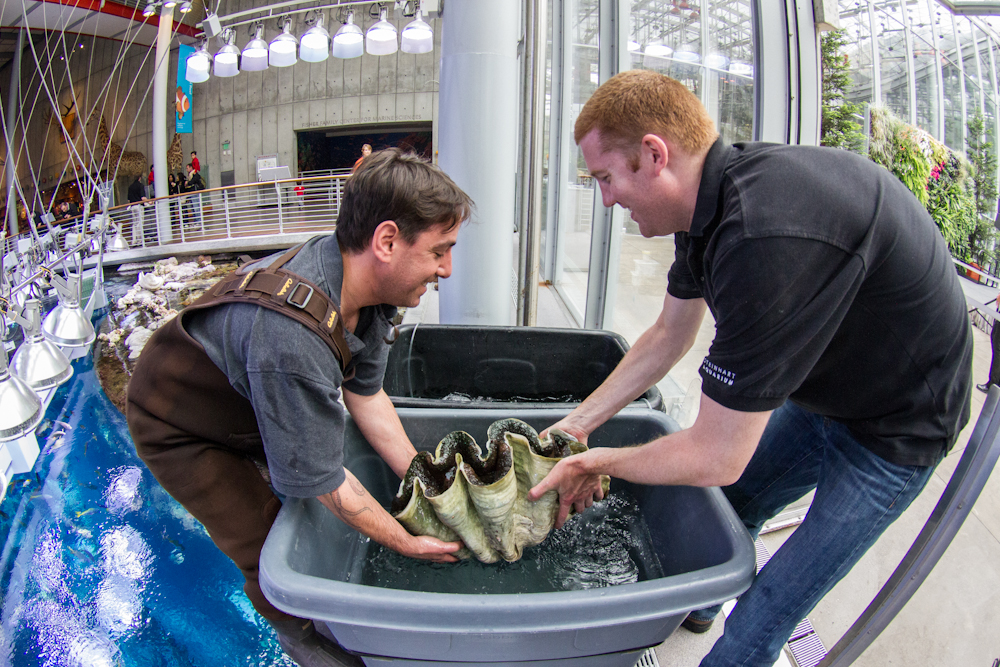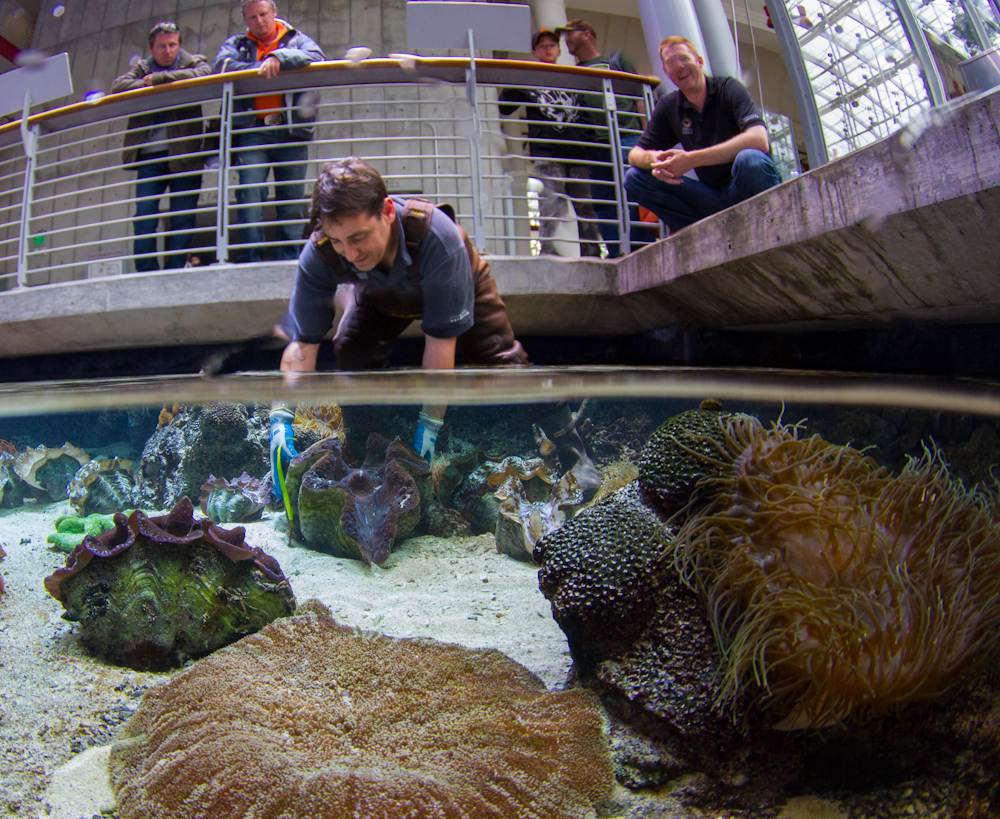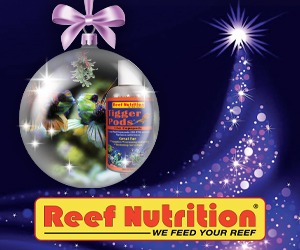Recently, the Steinhart Aquarium in the California Academy of Sciences received a big Tridacna gigas as a donation from Central Garden and Pet and Captive Reef Systems. After the standard 30 days of QT, the monster was ready to go into the shallows of the 212,000 gallon reef exhibit. Since we have a lot of clams already on display we are always worried about the protozoan Perkinsis, the probable cause of ‘pinched mantle’ disease, booming from any new introduction – so every new clam gets a mandatory 30 minute, pH adjusted freshwater dip before going on display. It is a very heavy clam, which is now in place, mantle extended for the public to enjoy.
That’s a big clam
by Rich Ross | May 20, 2012 | Corals, Industry, Invertebrates, Science, Too Cute | 2 comments
-

Richard Ross currently works as an Aquatic Biologist at the Steinhart Aquarium in the California Academy of Sciences, maintaining many exhibits including the 212,000 gallon Philippine Coral Reef. He has kept saltwater animals for over 25 years, and has worked in aquarium maintenance, retail, wholesale and has consulted for a coral farm/fish collecting station in the South Pacific. Richard enjoys all aspects of the aquarium hobby and is a regular author for trade publications, a frequent speaker at aquarium conferences and was a founder of one of the largest and most progressive reef clubs in Northern California, Bay Area Reefers. He is an avid underwater videographer and has been fortunate to scuba dive in a lot of places around the world. At home he maintains a 300 gallon reef system and a 250 gallon cephalopod/fish breeding system, and was one of the first people to close the life cycle of Sepia bandensis. When not doing all that stuff, he enjoys spending time with his patient wife, his incredible daughter and their menagerie of animals, both wet and dry.
View all posts











I think you misspelled the name. That is actually Tridacna gingerensis.
They are also unique in the clam world, because they do not have souls